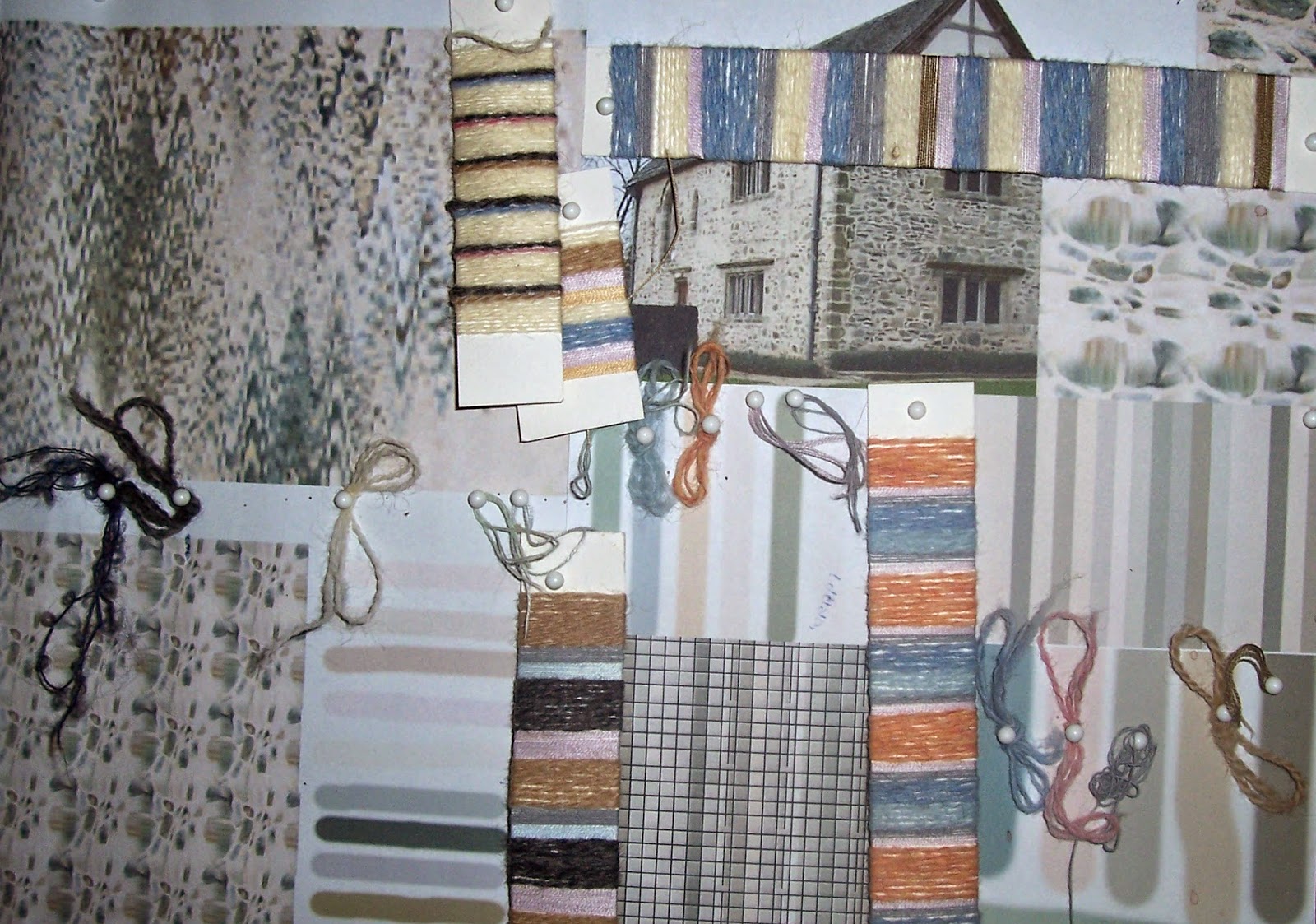 Why am I passionate about silk? Well there are all the usual reasons:
the luxurious nature of the fibre, the affinity it has for dye, the fact
that most of what is available to us to be spun is actually waste from
the commercial industry...Lots of reasons and I’m sure that lots of
people share them.My love affair with silk, as opposed to other
fibres and yarns, really began at an Association Summer School a long
time ago. The course, tutored by Sue Hiley, was amazing and I learnt so
much but one of the high spots for me was that Sue had brought along
some tussah silk worms to show us. One look and I was captivated!
Why am I passionate about silk? Well there are all the usual reasons:
the luxurious nature of the fibre, the affinity it has for dye, the fact
that most of what is available to us to be spun is actually waste from
the commercial industry...Lots of reasons and I’m sure that lots of
people share them.My love affair with silk, as opposed to other
fibres and yarns, really began at an Association Summer School a long
time ago. The course, tutored by Sue Hiley, was amazing and I learnt so
much but one of the high spots for me was that Sue had brought along
some tussah silk worms to show us. One look and I was captivated! We were in the middle of a major house move around that time and so
my caterpillar activities were postponed until we were settled again
when I embarked on raising tussah silkworms. 10 or so oak eating
caterpillars were very manageable, but then I discovered that there are
many different types of silk moth all with wonderfully coloured
caterpillars that emerge from their cocoons as beautiful moths. Unlike
their aristocratic cousins, the Mulberry silk moth (bombyx mori), these
Saturniidae, or Giant Silkmoths, will eat easily available plant
material, including lilac, beech, oak, apple and privet.
We were in the middle of a major house move around that time and so
my caterpillar activities were postponed until we were settled again
when I embarked on raising tussah silkworms. 10 or so oak eating
caterpillars were very manageable, but then I discovered that there are
many different types of silk moth all with wonderfully coloured
caterpillars that emerge from their cocoons as beautiful moths. Unlike
their aristocratic cousins, the Mulberry silk moth (bombyx mori), these
Saturniidae, or Giant Silkmoths, will eat easily available plant
material, including lilac, beech, oak, apple and privet.  I do not much care for the Mulberry silkworms as they are like giant
maggots, have no spirit of independence and are fussy feeders. That is
hardly their fault as they have been bred for thousands of years to
produce high quality silk and haven’t had the option of living as they
were originally intended, but I like caterpillars with a bit of spirit! I
also love the variety of silk that these wild caterpillars produce. If
we have access to Mulberry at Summer School I will raise a few, as well
as bringing some tussah caterpillars, so that course participants can
see for themselves the miraculous process that gives us silk. There are
lots of people who don’t like caterpillars and if you want to do the
course but not see the caterpillars I assure you they will be very easy
to avoid and will be securely caged!
I do not much care for the Mulberry silkworms as they are like giant
maggots, have no spirit of independence and are fussy feeders. That is
hardly their fault as they have been bred for thousands of years to
produce high quality silk and haven’t had the option of living as they
were originally intended, but I like caterpillars with a bit of spirit! I
also love the variety of silk that these wild caterpillars produce. If
we have access to Mulberry at Summer School I will raise a few, as well
as bringing some tussah caterpillars, so that course participants can
see for themselves the miraculous process that gives us silk. There are
lots of people who don’t like caterpillars and if you want to do the
course but not see the caterpillars I assure you they will be very easy
to avoid and will be securely caged!I do not reel the silk from my caterpillars because my end use for the silk is for hand-spinning and I enjoy the moths but I will have some unbroken Mulberry cocoons so that we can reel them.









